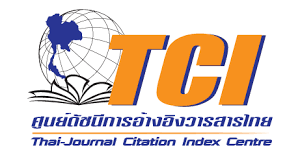Analysis of Rear Differential Component Clustering in Transmission Systems Using Hierarchical Cluster Analysis with and without Procurement Strategy Matrix Variables
DOI:
https://doi.org/10.55003/ETH.420207Keywords:
Hierarchical clustering, Supplier selection, Cost reductionAbstract
The automotive industry has faced significant challenges due to the large number of Tier 2 suppliers for Rear Differential components, with 17 suppliers providing 32 different parts. This situation has resulted in increased production costs and more complex supply chain management. This study aimed to analyze the clustering of Rear Differential components in transmission systems using Hierarchical Cluster Analysis, with the goal of supporting cost reduction in the automotive industry. Two clustering models were compared: Model 1, which excluded procurement strategy matrix variables (Special Requirements, Raw Material Grade, Raw Material Type, Manufacturing Process, Tier 2 Supplier Information, and Company Location), and Model 2, which incorporated an additional variable related to the Procurement Strategy Matrix. The decision criteria for determining the optimal number of clusters were based on four key factors: 1) Product design, 2) Characteristics, 3) Materials, and 4) Manufacturing. The clustering results for both models revealed the same optimal number of 13 clusters; however, the similarity matrix between the clusters differed. Furthermore, the number of members within each cluster varied. Based on the criteria for determining the optimal number of clusters, Model 2, which included the Procurement Strategy Matrix variable, demonstrated superior clustering efficiency compared to Model 1. Ultimately, this research identified 13 optimal clusters, reducing the number of Tier 2 suppliers from 17 to 13, representing a 23.53% reduction.
References
K. Vanichbuncha, “Cluster Analysis,” in Statistics for research, 14th ed., Bangkok, Thailand: 3 Lada Limited Partnership, 2023, ch. 11, sec. 11.3, pp. 216–220.
S. Sinthongsomboon, “Cluster Analysis,” in Multivariate Analysis by using SPSS and Minitab, 1st ed., Bangkok, Thailand, Chamchuree products co., ltd., 2016, ch. 6, sec. 6.5, pp. 141–144.
A. Rasri, W. Choeichom., P. Chimpalee and N. Kunjiratanachot, “Clustering Information Exposure Behavior the Welfare State Needs Among Older Adults in Thailand.” Journal of Science Ladkrabang, vol. 33, no. 2, pp. 77–89, 2024.
A. Amilcar, F. A. Andreia A. and D. F. Luis, “Application of a purchasing portfolio model to define medicine purchasing strategies: An empirical study,” Socio-Economic Planning Sciences, vol. 84,. 2022, Art. no. 101318, doi: 10.1016/j.seps.2022.101318.
M. Rahiminia, J. Razmi, S. S.Farahani and A. Sabbaghnia, “Cluster-based supplier segmentation: a sustainable data-driven approach,” Modern Supply Chain Research and Applications, vol. 5, no. 3, pp. 209–228, 2023, doi: 10.1108/MSCRA-05-2023-0017.
S. Plungsri and K. Puntusavase, “K-means Clustering for Grouping Product Size for Reducing Cost Packaging,” The Journal of Industrial Technology, vol. 16, no. 2, pp. 30–44, 2020.
N. Wiroonsri, L. Chokratprapa, N. Srisamarn and P. Dechpichai1, “Clustering Customers Using Their In-Depth Buying Behavior: A Pet Food Manufacturing Company Case Study,” Journal of Science Ladkrabang, vol. 31, no. 1, pp. 103–119, 2022.
Z. H. Che, “Clustering and selecting suppliers based on simulated annealing algorithms,” Computers & Mathematics with Applications, vol. 63, no. 1, pp. 228–238. 2012, doi: 10.1016/j.camwa.2011.11.014.
A. T. Almaktoom, K. K. Krishnan, P. Wang and S. Alsobhi, “Cost efficient robust global supply chain system design under uncertainty,” The International Journal of Advanced Manufacturing Technology, vol. 85, pp. 853–868, 2016, doi: 10.1007/s00170-015-7965-6.
D. Marini and J. R. Corney, “Process selection methodology for near net shape manufacturing,” The International Journal of Advanced Manufacturing Technology, vol. 106, pp. 1967–1987, 2020, doi: 10.1007/s00170-019-04561-w.
A. Srirattanapraphan and W. Songpan, “Guidelines for Using Student Personal Information by Clustering Based on User Behavior by Hierarchical Clustering Techniques: A Case Study of the Registration System at Khon Kaen University,” in The Proceedings of 7th National Conference, Suan Sunandha Rajabhat University, 2024, pp. 585–595. [Online] Available:http://www.journalgrad.ssru.ac.th/index.php/miniconference/article/view/4703/3298
U. Moonpen and S. Mungsing, “Clustering Algorithm Optimization Model for Essential Attribute Analysis of Tour Package Forms Inbound Tourism Market in Thailand,” The Journal of King Mongkut’s University of Technology North Bangkok, vol. 30, no. 4, pp. 656–667, 2019, doi: 10.14416/j.kmutnb.2020.04.006.
A. Araveeporn and J. Promsanga, “Comparing K-Mean Clustering Methods of DNA in Brain Tumors for High-Dimensional Data,” Journal of Science Ladkrabang, vol. 32, no. 2, pp. 67–79, 2023.
W. Khalid and Z. N. Lee Herbert-Hansen, “Using k-means clustering in international location decision.” Journal of Global Operations and Strategic Sourcing, vol. 11, no. 3, pp. 274–300, 2018, doi: 10.1108/JGOSS-11-2017-0056.
S. C. Park and J. H. Lee, “Supplier selection and stepwise benchmarking: a new hybrid model using DEA and AHP based on cluster analysis,” Journal of the Operational Research Society, vol. 69, no. 3, pp. 449–466, 2017, doi: 10.1057/s41274-017-0203-x.
Downloads
Published
How to Cite
Issue
Section
License
Copyright (c) 2025 School of Engineering, King Mongkut’s Institute of Technology Ladkrabang

This work is licensed under a Creative Commons Attribution-NonCommercial-NoDerivatives 4.0 International License.
The published articles are copyrighted by the School of Engineering, King Mongkut's Institute of Technology Ladkrabang.
The statements contained in each article in this academic journal are the personal opinions of each author and are not related to King Mongkut's Institute of Technology Ladkrabang and other faculty members in the institute.
Responsibility for all elements of each article belongs to each author; If there are any mistakes, each author is solely responsible for his own articles.






